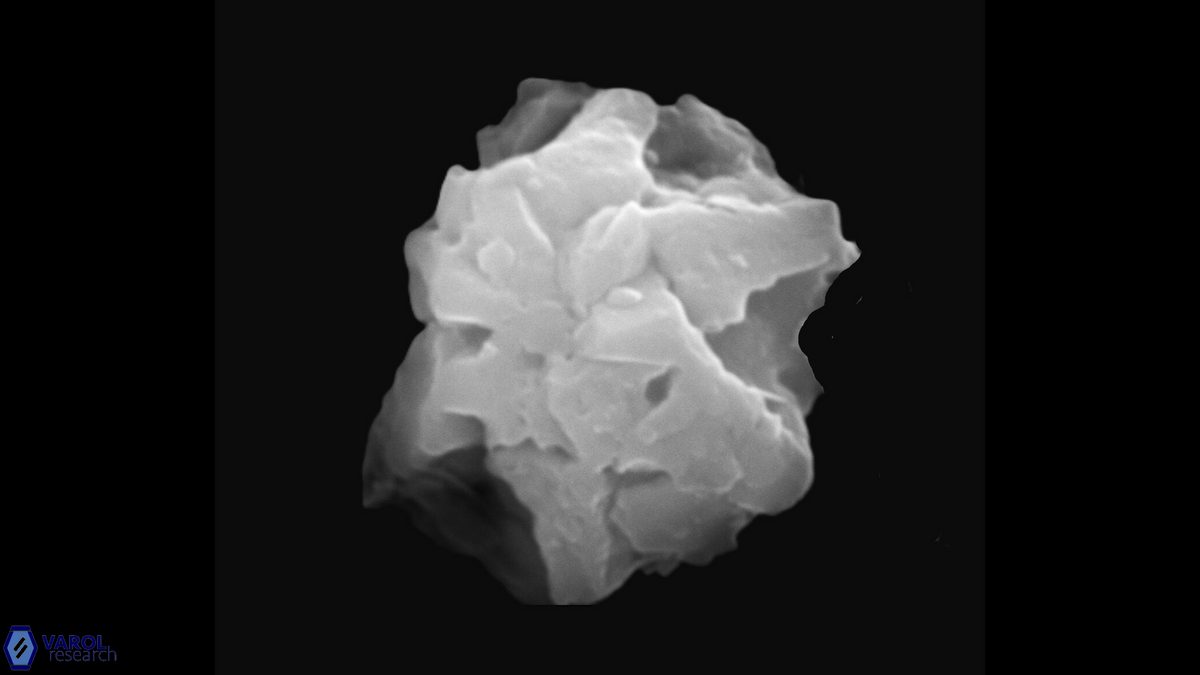Olladiscoaster asterilithos

Olladiscoaster asterilithos, holotype
Set number: 2478
-
1
-
2
-
3
-
4
-
5
-
6
-
7
-
8
-
9
-
10
-
11
-
12
-
13
-
14
10µm
Olladiscoaster asterilithos Bowman & Varol, 2024
Circular species of Olladiscoaster have segments without arms. On the distal side, the distinct sutural ridges are created by the deep cavities. The sutural ridges are raised towards the centre and capped by boomerang-shaped distal covers. The distinct proximal ridges with a radiating proximal knob at the centre decorate the bulged proximal side.
From the Greek asterilithos, the star shape of rock – refers to its radiating proximal knob.
Maximum diameter: 6.90 µm, Diameter of the proximal knob: 3.40 µm (measurements from SEM micrograph).
Olladiscoaster asterilithos is the only species with a radiating proximal knob; thus, it differs from any other Olladiscoaster. Olladiscoaster asterilithos is further differentiated from the Olladiscoaster molae group by lacking quasiarms and, as a result, not having a stellate outline.
Varol, O. & Bowman, A. R. 2024. The New Middle Miocene Genus Olladiscoaster, and Related and Associated Discoasters. Grzybowski Foundation Special Publication, 28: 1-103 pp.
